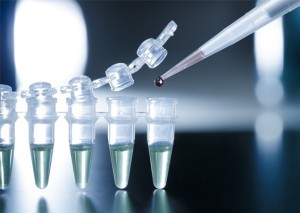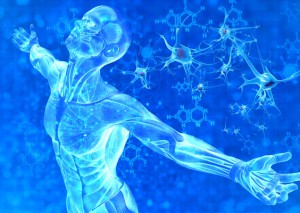When you’re young, your body has the ability to bounce back quickly from illness and trauma. That’s because you have plenty of stem cells.
What are stem cells?

Stem cells are the supply of healthy “replacement cells” that you’re born with. Your body assigns them to replace cells that are damaged, old or dying.
But you lose stem cells as you age, making your body’s recovery process longer and harder.
And as traumas and illnesses accumulate, your body loses its ability to fully heal. That’s when chronic problems start.
The amount of adult stem cells available to your body was once very limited. But science has found a way to fix that…
What is stem cell therapy… and how does it work?
Stem cell therapy is the use of stem cells to treat and prevent a disease or condition.
Through stem cell therapy, healthy stem cells can be harvested from your own body and used to repair and regenerate diseased or dying cells and tissues.

The “secret weapons” inside stem cells that makes this possible are tiny polypeptides (proteins) called growth factors.
Human growth factors are cellular messengers that send signals to activate the production of new cells, or to instruct a cell to create new cells with different functions. This
special signaling mechanism is what triggers the wondrous healing power of stem cells.An amazing breakthrough…
While adult stem cells live in various human organs and tissues, they’ve been relatively scarce and difficult to isolate. And they’ve typically generated only the cell types of the tissue in which they’re found.
But that changed in 2013 when researchers at the University of California, Los Angeles discovered stem cells in human adipose (fat) tissue that can be differentiated into virtually every cell type in the human body without genetic modification.i
This new reserve of regenerative cells found within fat tissue was a game-changer…
Suddenly, an abundant source of stem cells was available with the potential to create new bone and cartilage tissue to provide relief for debilitating diseases like chronic joint pain… or to build and regenerate blood vessels for those suffering from poor blood flow to their vital organs.
There’s even the prospect of stem cells creating new, healthy organs from scratch, including the heart, liver, pancreas and lungs.
The healing potential of stem cell therapy is virtually limitless. It promises to fundamentally transform modern medicine by eradicating all illnesses, including cancer, heart disease, diabetes, Alzheimer’s disease, Parkinson’s disease and blindness.
New generation of stem cell therapy
Until recently, no one had figured out a way to use stem cell therapy in an inexpensive, practical way. But that’s changing.
In fact, there are cutting-edge anti-aging creams that contain adipose-derived stem cell human growth factors to rejuvenate skin.
After the cream is applied to your skin, microspheres penetrate the epidermis and release the growth factors. They begin to communicate directly with your skin cells and signal them to produce more collagen and elastin. Collagen provides structure and firmness to the skin. Elastin is responsible for elasticity and keeping your skin smooth and tight.
Human growth factors also help regenerate new, healthy tissue to eradicate old fine lines and wrinkles.

With this new cream you’ll be able to give your skin all of the bounce-back capacity it had in your youth.
In the meantime, there is a novel nutritional approach you can take to boost the blood and immune system stem cells found in your bone marrow right away.
Researchers studying the stem cell-promoting effects of various nutrient combinations found that a combination of blueberry, green tea extract, carnosine and vitamin D3 increased bone marrow stem cells by an amazing 68%.ii
I’ve been recommending these nutrients to my patients and readers for years to also help boost their immune systems, fight chronic inflammation and prevent a host of age-related diseases.
Best Way to Naturally Increase Your Body’s Stem Cells

- Eat fresh blueberries. They’re available for nearly eight months of the year from producers across the United States and Canada. If you can’t get fresh blueberries, supplement with 500 mg of organic whole blueberry extract per day.
- Add carnosine. I recommend getting 1,000 mg of carnosine every day. Grass-fed, pasture-raised meat is the best way to get carnosine from food. A typical 7-ounce serving of beef has about 250 mg of carnosine. If you can’t get enough by eating red meat, I recommend you supplement with natural L-carnosine. Take 500 mg twice a day.
- Take 200 mg to 350 mg of green tea extract twice a day. The active ingredient in green tea, EGCG, can prevent and repair cell damage, including stem cells. And green tea can stimulate the genes that activate stem cells.iv
- Get sunshine. Getting 15-20 minutes of unprotected sun each day is safe and will provide roughly 5,000 IUs of vitamin D. If that’s not an option for you, take a vitamin D3 supplement of at least 5,000 IUs. This “super nutrient” will not only boost stem cell production, but it also fights cancer, heart disease, Alzheimer’s disease, diabetes and a host of other age-related illnesses.
By making these simple adjustments to your diet, you can give your body the natural boost it needs to maintain youthful stem cell production.
To Your Good Health,

Al Sears, MD, CNS
iSaleh Heneidi, et al, Awakened by Cellular Stress: Isolation and Characterization of a Novel Population of Pluripotent Stem Cells Derived from Human Adipose Tissue, June 5, 2013
DOI: 10.1371/journal.pone.0064752
iiBickford PC, Tan J, Shytle RD, et al. Nutraceuticals synergistically promote proliferation of human stem cells. Stem Cells Dev. 2006 Feb;15(1):118-23.
iiiiu Q, Wang H, Hu D, Ding C, Xiao H, Xu H, Shu B, Xu S. “Effects of sodium selenite on telomerase activity and telomere length.” Sheng Wu Hua Xue Yu Sheng Wu Wu Li Xue Bao (Shanghai). 2003;35(12):1117-22.
ivHiyama, E. and Hiyama, K. “Telomere and telomerase in stem cells.” Br J Cancer. 2007 April 10; 96(7): 1020-1024.

